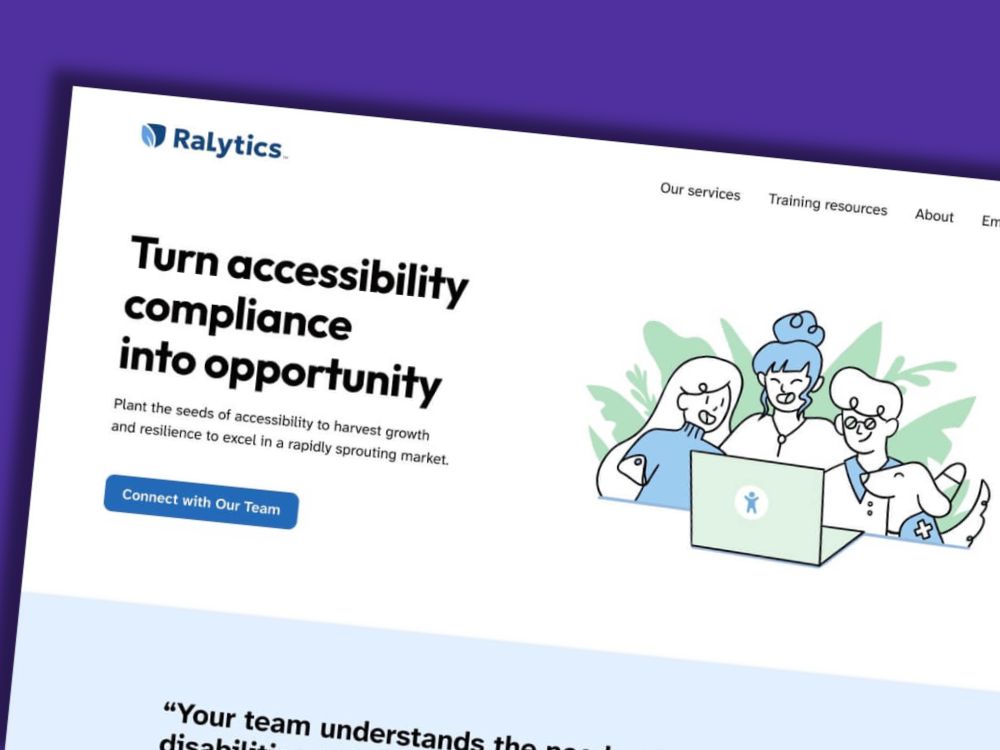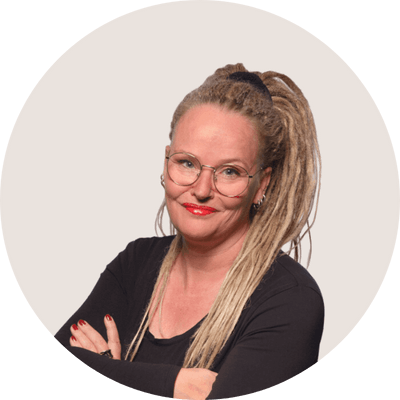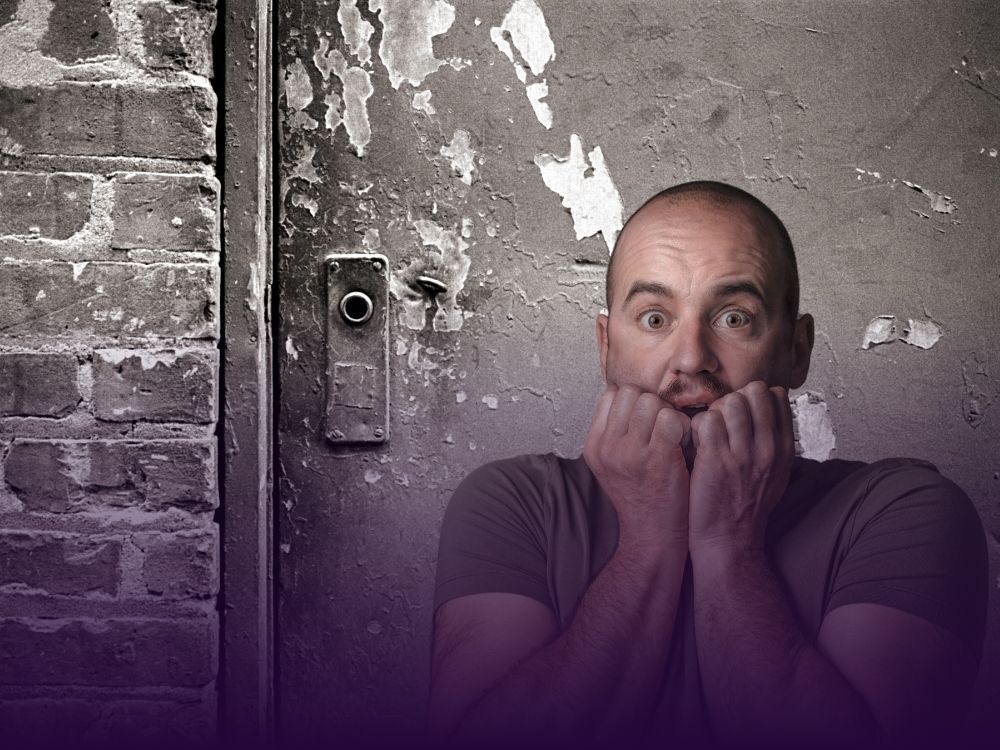What happens when a team of accessibility specialists stops settling for “good enough” and demands more from WordPress?
- Real accessibility means asking harder questions
- Jennifer Zhang doesn’t do checkbox accessibility
- A mission built on people, not policy
- Testing Greyd.Suite under pressure
- The bugs weren’t the issue. How Greyd responded was the pleasant surprise.
- Not just a theme, but a system that evolves
- Changing the industry, one mindset at a time
- The right partnership is worth everything
Real accessibility means asking harder questions
RaLytics isn’t your average agency. They’re a service-disabled veteran-owned small business built by people with deep roots in government, healthcare, and disability advocacy. Their team includes accessibility experts, veterans, and individuals with lived experience. They don’t just offer accessibility as a service. It’s the lens through which everything is built.
So when their own website needed a rebuild, they weren’t looking for trendy themes or quick fixes. They needed a system that would support their standards, without forcing endless workarounds or breaking under real-world pressure.
That search led them to Greyd.Suite, both through their own research and through recommendations from digital accessibility specialists.
Jennifer Zhang doesn’t do checkbox accessibility
Before joining RaLytics, Jennifer Zhang was a Senior Accessibility Program Manager at Microsoft, where she helped teams transform compliance into genuine usability gains. She worked on everything from internal design systems to Xbox tools, to the Cognition and Mental Health Inclusive Design Toolkits, and her leadership helped reduce accessibility bugs by more than 50% on some teams.
Her path into accessibility wasn’t planned, it was personal. She had friends with disabilities growing up and that led her to being the best accessibility tester on her team when she started in tech. During Microsoft’s first global hackathon, her team won with a wheelchair that could be driven with eye gaze. She has also won multiple awards for mental health projects and judged Microsoft’s Mental Health Hackathon category.
Those moments stuck.
When Jennifer was laid off after 11 years, during Microsoft’s October 2022 reorganization, she wasn’t looking for another corporate box to fit into. She wanted to work somewhere that saw accessibility as more than a checkbox. Somewhere that would let her build, teach, and challenge the status quo. By February 2023, she’d found exactly that at RaLytics.
A mission built on people, not policy
Accessibility became central to RaLytics the way it often should: by listening to users. One of their early projects was praised by a blind veteran as “the most usable tool” he’d come across in government. That kind of impact reshaped the company’s direction.
Jennifer was brought in to formalize that approach, not just in client projects, but internally too. She helped restructure their development pipeline, evaluated every tool they used, and led accessibility training across the organization.
“We’re not here to follow trends,” she told me. “We’re here to lead with what matters.”
That’s exactly how the website rebuild started: with a serious evaluation of what they needed and what the tools on the market could realistically offer.
Testing Greyd.Suite under pressure
Jennifer’s team didn’t stumble into Greyd.Suite. They tested it.
They cloned their old site, rebuilt it block-by-block in a staging environment, and put the entire thing through rigorous accessibility testing: keyboard navigation, screen reader behavior, semantic output, you name it.
“We’d already hit the ceiling with page builders like Divi,” Jennifer explained. “We needed a system that respected the block editor, gave us clean HTML, and let us see what was happening under the hood.”
What stood out in Greyd.Suite wasn’t perfection. It was transparency.
“No hidden shortcodes. No mystery markup. Everything was inspectable and understandable. For us, that’s huge.”
The bugs weren’t the issue. How Greyd responded was the pleasant surprise.
“We found a dozen issues, mostly in the Form Builder,” Jennifer said. “Multiselect checkboxes weren’t behaving right. Error messages weren’t being announced. Validation had edge cases. It was solid work, but not perfect, yet.”
That wasn’t a deal-breaker. What mattered was how Greyd handled it.
“No excuses. No brushing it off. They thanked us, fixed it, and gave us updates as they worked through the backlog.”
Nine out of twelve issues were resolved before the site even launched. The remaining ones were bigger structural items, already in progress.
And this wasn’t about having a top-tier support plan.
“They didn’t help us because we had some special contract,” Jennifer said. “They helped us because they care and want to do things the right way.”
Not just a theme, but a system that evolves
What Greyd.Suite offered wasn’t just tooling. It was a foundation that could evolve with the team’s needs.
“We stretched the system,” Jennifer said. “On purpose. Because that’s what real-world builds do. And instead of blaming the user or making excuses, the Greyd team saw that as useful input.”
They didn’t ask for pre-written fixes or quick patches. They engaged.
“This is rare,” she told me. “Too many vendors and third-party dependencies expect consultants to hand over copy-paste solutions. That’s not how learning happens. Greyd understood that. They thought with us, not against us.”
Changing the industry, one mindset at a time
Jennifer’s work goes way beyond websites. At RaLytics, she’s helping clients embed accessibility into their day-to-day practices. From school districts and state agencies to internal product teams.
Her strategy focuses on behavior, not blame.
“There’s a great analogy from the book Switch: the rider and the elephant,” she said. “The rider is logic. The elephant is emotion. Most accessibility work only talks to the rider. But if you don’t move the elephant, nothing changes.”
Her vision is long-term: build a library of emotionally intelligent training programs that actually shift culture, and fund further growth at RaLytics.
She’s already working with clients on that. Accessible onboarding, better vendor evaluation, practical coaching. Not just policy compliance, but lasting change.
The right partnership is worth everything
RaLytics didn’t need a drag-and-drop toy. They needed a WordPress-based system that could keep up with their standards and would adapt quickly when it didn’t.
Greyd.Suite earned their trust not by getting everything right out of the gate, but by staying responsive, respectful, and open to real dialogue.
“We weren’t looking for a perfect product,” Jennifer said. “We were looking for partners who listen. And follow through.”
That’s rare. And it’s why RaLytics isn’t just using Greyd.Suite for one project. It’s become part of their long-term strategy, for both their own growth and the future of inclusive design on the web.
Would you like to how Greyd.Suite works?






